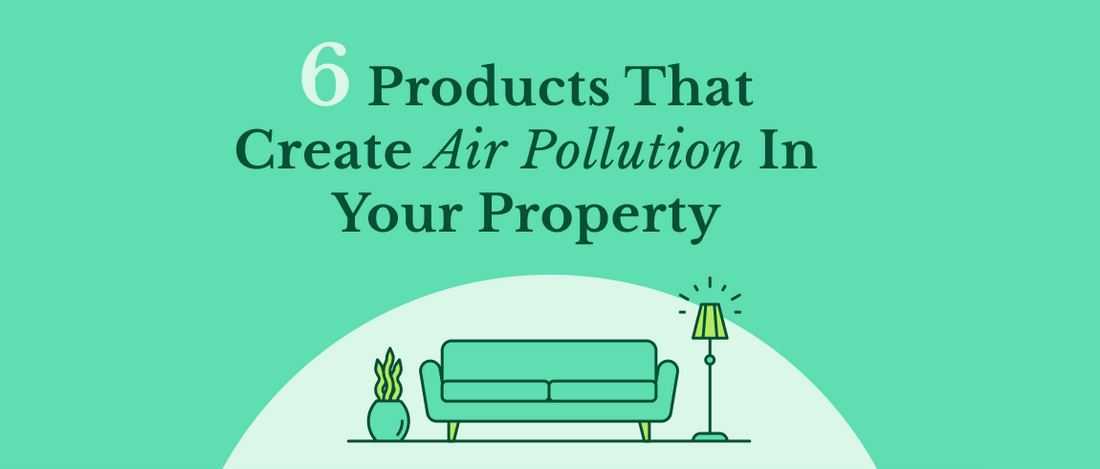Every day, thousands of pollutants circulate around your house - but whereas our bodies can handle some, many of them can become an actual risk to your health. In the last article, we presented the items that you can find in every household that contributes to your indoor air pollution. Now we bring you the second part of that list and what you could do to improve your indoor air quality.
1. Carpets and Curtains
Both carpets and curtains may trap various pollutants that can harm your health in both the short and the long term: dust mites, allergens, pesticides, lead, and dirt are only some of the hazardous particles. Furthermore, such items can release dangerous VOCs if they are manufactured with harmful chemicals and glues.
Choose carpets specifically intended for indoor use and can be removed easily and cleaned properly.
Look for labels warning you of the existence of industrial glues such as formaldehyde, which can even cause cancer. Ventilate the relevant rooms as much as possible after installing or bringing such items in, and of course, make sure to clean them regularly, using appropriate products.
2. Paint and Paint Strippers
Although some might like the smell of fresh paint, being exposed to it for more extended periods is very unhealthy. Many of the commonly used paint products still contain high levels of VOCs, which can cause headaches and nausea - all the way to damaging multiple vital organs and systems.
When buying fresh paint, look for “low” or “zero VOC” paints, and ventilate the freshly painted areas well, especially during and right after applying a new coating. Don’t keep unused paint at home: even closed containers can transmit hazardous fumes. Of course, follow the manufacturer’s instructions when handling.
3. Cigarettes, cigars, and e-cigarettes
It was proven long ago that smoking and secondhand smoking are toxic and even fatal, but the risks are even greater when it comes to it being indoors. When you’re smoking inside your house, the secondhand smoke lingers for up to 5 hours - endangering the other house residents, especially children.
Besides, the toxic chemicals will cling to any surface - walls, clothing, and others, and removing them is extremely difficult. The solution is as easy as they come - simply don’t smoke inside and keep your house smoke-free.

4. Furniture
Many pieces of furniture available nowadays are made out of processed, engineered wood. The problem is that those contain formaldehyde, which, as we’ve established, can emit highly toxic VOCs. That said, manufacturers don’t have to necessarily state that they had used any of such hazardous chemicals. Luckily, it’s becoming easier to spot the “healthy” furniture - just look for indoor air quality certifications (UL, Greenguard, etc.).
A good rule of thumb is to avoid any furnishings that include engineered wood, or simply buying second-hand furniture.
5. Non-stick Cookware
Cooking with non-stick cookware at very high temperatures can release extremely toxic chemicals into the air, causing “Teflon flu,” including symptoms such as chills, fever, headache, and various aches that can last up to a couple of days. Longer exposures to those chemicals can lead to devastating effects, like lung damage.
Don’t overheat your non-stick cookware or place it in hot ovens - the danger starts around 500 degrees Fahrenheit (260 celsius), where the non-stick coating simply breaks. For cooking that requires hot temperatures, use cast iron or stainless steel cookware to avoid such problems.
6. Aerosol Sprays
Besides being bad for the environment, aerosol products such as hair products, shaving creams, oil removal sprays, and deodorants are especially bad for your health. Products coming in the shape of an aerosol spray emit high levels of VOCs and toxins, and their remnants also stick to various surfaces.
The EPA strongly advises against using any kind of aerosol sprays. If it’s inevitable, they suggest buying only as much as you absolutely need - and avoid purchasing supersized or bundled aerosol sprays. The sprays that are designed to be applied directly on your body are the most dangerous ones, and they suggest buying non-spray solutions instead.



